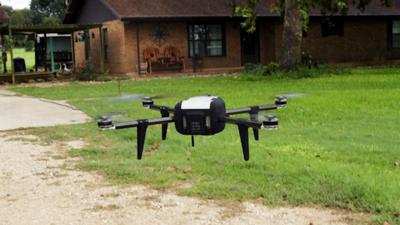A Full Parsing Of The Landmark Drone Case
The legal issues and arguments leading to the decision in Taylor v. FAA are complex, and they will have ramifications for literally hundreds of thousands of model airplane and drone operators across the country.

One of the attorney's involved in the case is Jonathan Rupprecht, who has built a reputation of being an authority on legal issues involving drones. On his website, Rupprecht has posted the "Complete Guide to Taylor v. FAA (Drone Registration Lawsuit) to help the industry better understand the case and the rulings, one of which vacated the FAA's drone registration rule.
Rupprecht writes that the basic way to understand the issues in all three cases are Section 336 of the FAA Modernization and Reform Act of 2012 says the “Administrator of the Federal Aviation Administration may not promulgate any rule or regulation regarding a model aircraft, or an aircraft being developed as a model aircraft.”
The FAA switching interpretations from model aircraft not being required to be registered to now being required to be registered was a prohibited interpretive rule. (no rule or regulation).
The creation of Part 48 was a regulation “regarding model aircraft[;]” thus, it is illegal.
The switching interpretations to apply the Special Flight Rules Area around D.C. to model aircraft is an interpretive rule in violation of 336.
The ruling affects only those flying their aircraft in accord with Section 336. This means the model aircraft being flown must be:
- capable of sustained flight in the atmosphere;
- flown within visual line of sight of the person operating the aircraft; and
- flown for hobby or recreational purposes.
AND
- the aircraft is flown strictly for hobby or recreational use;
- the aircraft is operated in accordance with a community-based set of safety guidelines and within the programming of a nationwide community-based organization;
- the aircraft is limited to not more than 55 pounds unless otherwise certified through a design, construction, inspection, flight test, and operational safety program administered by a community-based organization;
- the aircraft is operated in a manner that does not interfere with and gives way to any manned aircraft; and
- when flown within 5 miles of an airport, the operator of the aircraft provides the airport operator and the airport air traffic control tower (when an air traffic facility is located at the airport) with prior notice of the operation (model aircraft operators flying from a permanent location within 5 miles of an airport should establish a mutually-agreed upon operating procedure with the airport operator and the airport air traffic control tower (when an air traffic facility is located at the airport)).
Rupprecht says that it is important to note that just because you are flying recreationally does NOT mean you are in this protected category. A great example is people flying recreationally but not in accord with a community-based organization’s safety guidelines. These people are really recreational flyers who are operating under Part 107. Rupprecht expands on those myths and misconceptions in the document.
According to Rupprecht, the FAA can choose to ask for a rehearing, but the D.C. Circuit Handbook of Practice says, “[v]ery few petitions for rehearing are granted. Sanctions may be imposed as a penalty for filing a petition for rehearing found to be wholly without merit.”
"Another option is to file a petition to the United States Supreme Court. Something like 1-2% of the cases appealed to the Supreme Court are granted certiorari to be argued at the U.S. Supreme Court. This means that there is a high chance this is the final stop for this case.
Additionally, he says, this is not the only case. There are two other cases out there.
(Image from file)
 ANN's Daily Aero-Linx (06.29.25)
ANN's Daily Aero-Linx (06.29.25) ANN's Daily Aero-Term (06.29.25): Gross Navigation Error (GNE)
ANN's Daily Aero-Term (06.29.25): Gross Navigation Error (GNE) Classic Aero-TV: Anticipating Futurespace - Blue Origin Visits Airventure 2017
Classic Aero-TV: Anticipating Futurespace - Blue Origin Visits Airventure 2017 NTSB Final Report: Cirrus SR22
NTSB Final Report: Cirrus SR22 Airborne Affordable Flyers 06.26.25: PA18 Upgrades, Delta Force, Rhinebeck
Airborne Affordable Flyers 06.26.25: PA18 Upgrades, Delta Force, Rhinebeck



